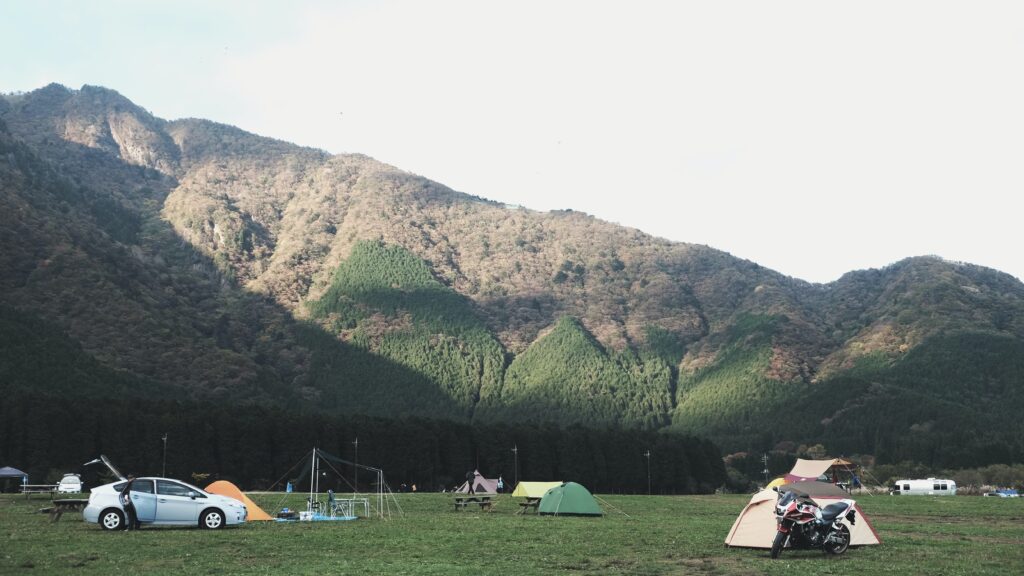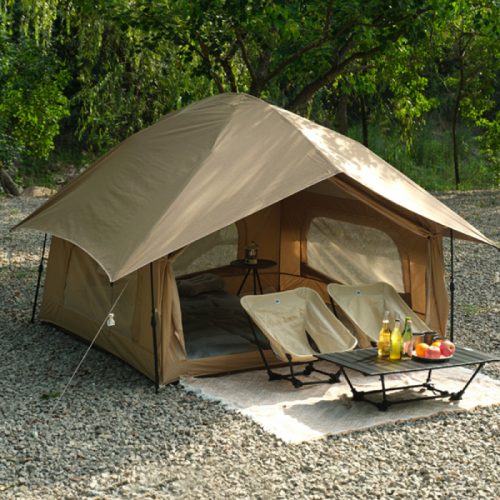When planning a camping trip, one of the most pressing concerns is how to keep your tent dry in case of rain. So, how do you waterproof your camping tent effectively? This question is crucial for ensuring a comfortable and enjoyable outdoor experience.
To answer this, waterproofing your tent involves several steps that can vary depending on the type of tent you have. Whether you own a traditional dome tent, a backpacking tent, or a larger family tent, there are specific methods to enhance its water resistance. Below, we’ll outline the steps you can take to waterproof your tent effectively, ensuring you stay dry and cozy during your adventures.
This article will solve these problems for you.
Table of Contents

Step 1: Choose the Right Location
Before you even start waterproofing, selecting the right location for your tent is essential. Choose a site that is slightly elevated to avoid water pooling during heavy rain. Look for natural windbreaks, like trees or bushes, to help shield your tent from the elements. Avoid setting up near rivers or streams, especially in areas prone to flooding. Also, consider the terrain; rocky or uneven ground can cause water to run towards your tent.
Step 2: Clean Your Tent
A clean tent is crucial for effective waterproofing. Dirt and grime can hinder the waterproofing process, leading to leaks. Begin by setting up the tent in a dry area, preferably on a clean surface. Use a soft brush or sponge and a mixture of mild soap and water to gently scrub the tent fabric, focusing on areas with visible dirt or stains. Pay special attention to seams, zippers, and corners where dirt tends to accumulate. Rinse thoroughly with clean water to remove any soap residue and allow it to dry completely in a shaded area to prevent UV damage.
Step 3: Reseal the Seams
Most tents come with factory-sealed seams, but these can wear over time due to exposure to the elements. Inspect your tent carefully for any areas where the seam sealant has cracked or peeled. Use a high-quality seam sealer specifically designed for tents—silicone-based for nylon and polyester tents, or polyurethane for canvas tents. Apply the sealant generously along the seams using a small brush or your finger, ensuring it penetrates any gaps. Allow the sealant to dry completely according to the manufacturer’s instructions, usually for 24 hours.

Step 4: Apply a Waterproofing Spray or Treatment
Different tents require different treatments based on their materials. For nylon or polyester tents, use a silicone-based waterproofing spray. For canvas tents, a wax-based treatment may be more suitable. Before applying, ensure the tent is clean and dry. Set the tent up or lay it flat on a clean surface. Shake the spray can or bottle well and apply the treatment evenly, covering all areas of the tent, including the rainfly and the floor. Pay special attention to high-stress areas like corners and seams, as these are prone to leaks. Allow the treatment to dry completely before packing it away.

Step 5: Check the Rainfly
If your tent has a rainfly, make sure it’s in good condition. Inspect it for any holes, tears, or areas where the waterproof coating may have worn off. If you find any damage, patch it up using a repair kit or duct tape as a temporary fix. For rainflys that have lost their waterproofing, consider reapplying a waterproofing spray as mentioned in the previous step. Ensure the rainfly fits snugly over the tent, allowing water to run off rather than pooling on top.

Step 6: Store Your Tent Properly
When not in use, store your tent in a cool, dry place. Avoid storing it in damp conditions, as this can lead to mold and mildew, which can compromise waterproofing. Use a breathable storage bag to prevent moisture buildup. Make sure the tent is completely dry before packing it away. If your tent is made from canvas, consider applying a light coat of tent conditioner to maintain its water resistance during storage.
Additional Tips:
- Test Before You Go: If you have time, set up your tent in your backyard and test for leaks with a hose or during a light rain. This gives you a chance to make any necessary repairs before your trip.
- Consider a Footprint: Using a ground tarp or footprint can provide an extra layer of protection against moisture and wear. Make sure it is slightly smaller than the tent floor to prevent water from pooling underneath.
- Monitor Weather Conditions: Always check the weather forecast before heading out. If heavy rain is expected, take extra precautions in waterproofing and securing your tent.

Conclusion
Waterproofing your camping tent is a straightforward process that can significantly enhance your camping experience. By following these steps—choosing the right location, cleaning your tent, resealing seams, applying waterproofing treatments, checking the rainfly, and storing it properly—you can ensure your tent remains dry during your outdoor adventures. Remember, the type of tent you own may require specific care, so always refer to the manufacturer’s guidelines for the best practices. With these tips, you can confidently face whatever weather comes your way, allowing you to focus on enjoying the great outdoors. Happy camping!

